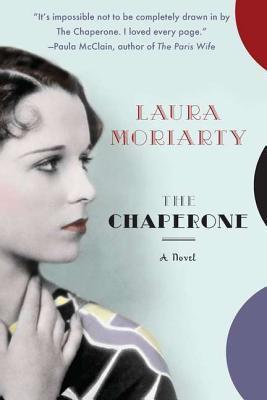
By Laura Moriarty
(Riverhead Books)
There’s a picture of 1920s movie star Louise Brooks on the cover of “The Chaperone” ― her hair bobbed, her painted lips in the slightest of pouts ― but hers is not the story the book tells. Rather, the novel imagines the life of the woman from Wichita, Kan., who accompanied Brooks to New York City as her chaperone in the summer of 1922.
Cora Carlisle is the wife of a prominent lawyer, the mother of two college-age sons, involved in Wichita society ― and hiding a couple of secrets. When she learns that 15-year-old Louise is traveling to New York to attend a dance academy, she almost immediately volunteers to be the teen’s chaperone.
The reason Cora is so keen to visit New York relates to one of her secrets: She’s not just a farm girl from McPherson, she lived in an orphanage in New York as a young child and was sent West on an orphan train. It’s nothing people would think anything of today, but Cora knows that if she were thought to be possibly an illegitimate child or the child of parents of an undesirable nationality, it could negatively affect her standing, and her husband’s as well. Although the couple who adopted her loved her and gave her a good life, she wants to find out about her biological parents and feels that a trip to New York is the way to accomplish that.
She initially runs into a wall, as the sisters at the orphanage take seriously their promises of confidentiality. But with the help of a German immigrant handyman at the orphanage, Cora finds enough to write a letter to a woman in Massachusetts.
The job of chaperone, however, is not an easy one. Willful, unconventional and flirtatious, Louise gives Cora fits by dining with strange men, drinking alcohol and pushing the limits of decorum. She’s also talented and irresistible to men, and she knows it ― but Cora eventually finds out how troubling events in Louise’s past have shaped her personality. And as she spends time with Louise in the city, she begins to question issues she hadn’t thought too much about before: integration, Prohibition, even corsets.
“That’s what spending time with the young can do,” Cora thinks. “... The young can exasperate, of course, and frighten and condescend, and insult, and cut you with their still unrounded edges. But they can also drag you, as you protest and scold and try to pull away, right up to the window of the future, and even push you through.”
When Cora returns to Wichita, she’s not alone: she has brought the orphanage handyman and his daughter along. Instead of opening up her life, this situation creates even more secrets. The rest of the novel follows Cora’s life after her return, all the way into old age, through all the wars and social upheavals, through the redefinition of her life and her family.
In “The Chaperone,” Moriarty has crafted a sweeping, unpredictable story that draws the reader into one woman’s life. She has woven in enough historical detail to give a clear sensory image of the places and events ― streets and shops and fashion and entertainments, in both Kansas and New York ― but never lets detail overwhelm the story.
And Cora is a wonderful heroine to spend a book with: she’s flawed but well-intentioned, she can muster courage and strength when she needs to, she grows and changes and always stays open to seeing the world with fresh eyes. (MCT)
-
Articles by Korea Herald




![[Graphic News] Beer the most favored alcoholic drink by Koreans](http://res.heraldm.com/phpwas/restmb_idxmake.php?idx=644&simg=/content/image/2024/05/09/20240509050765_0.gif&u=)









![[Weekender] Pet food makers bet big on ‘recession-free’ pet food market](http://res.heraldm.com/phpwas/restmb_idxmake.php?idx=652&simg=/content/image/2024/05/10/20240510050754_0.jpg&u=20240511163252)




![[What to play] Musical tributes to family in the month of family](http://res.heraldm.com/phpwas/restmb_idxmake.php?idx=642&simg=/content/image/2024/05/09/20240509050795_0.jpg&u=)